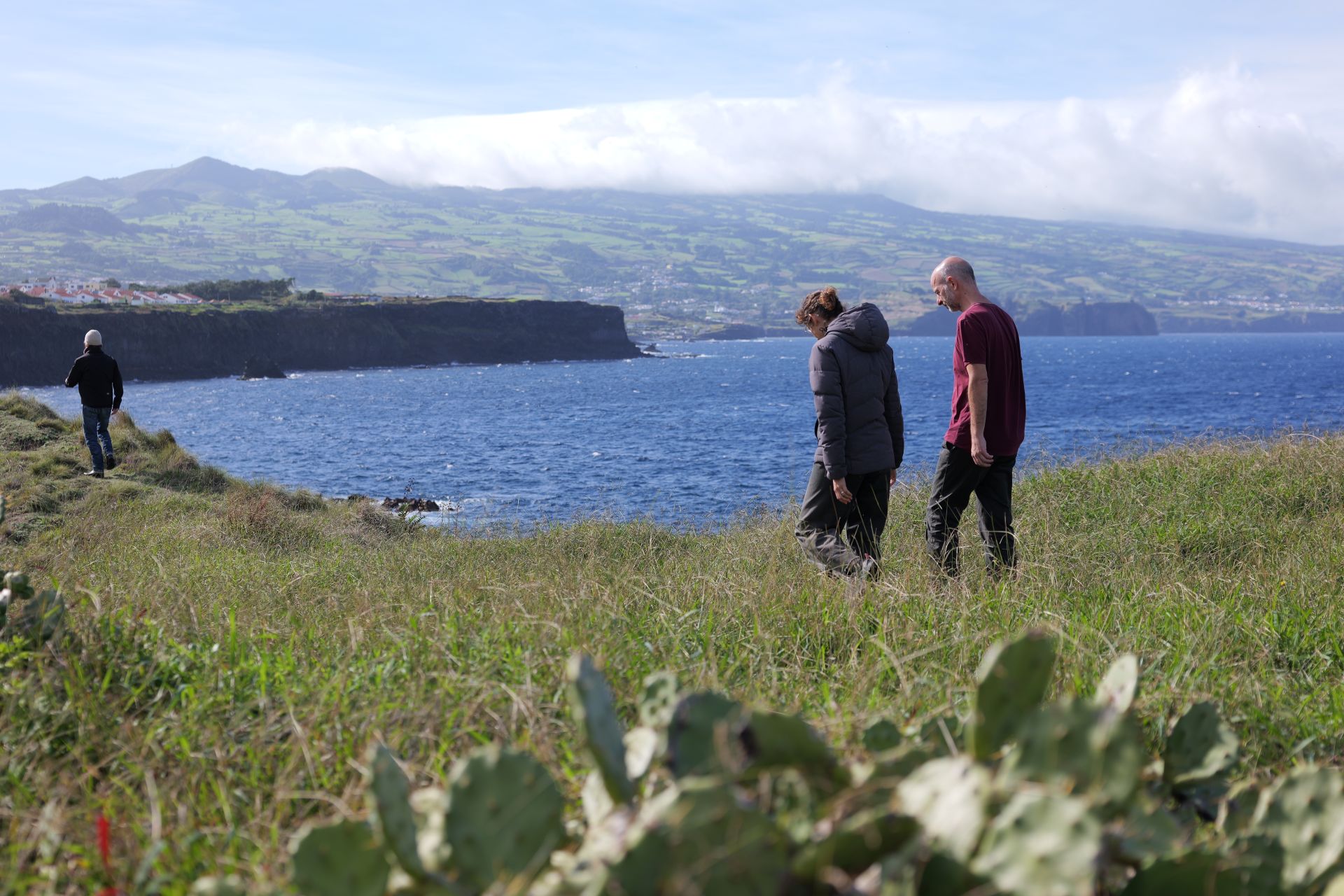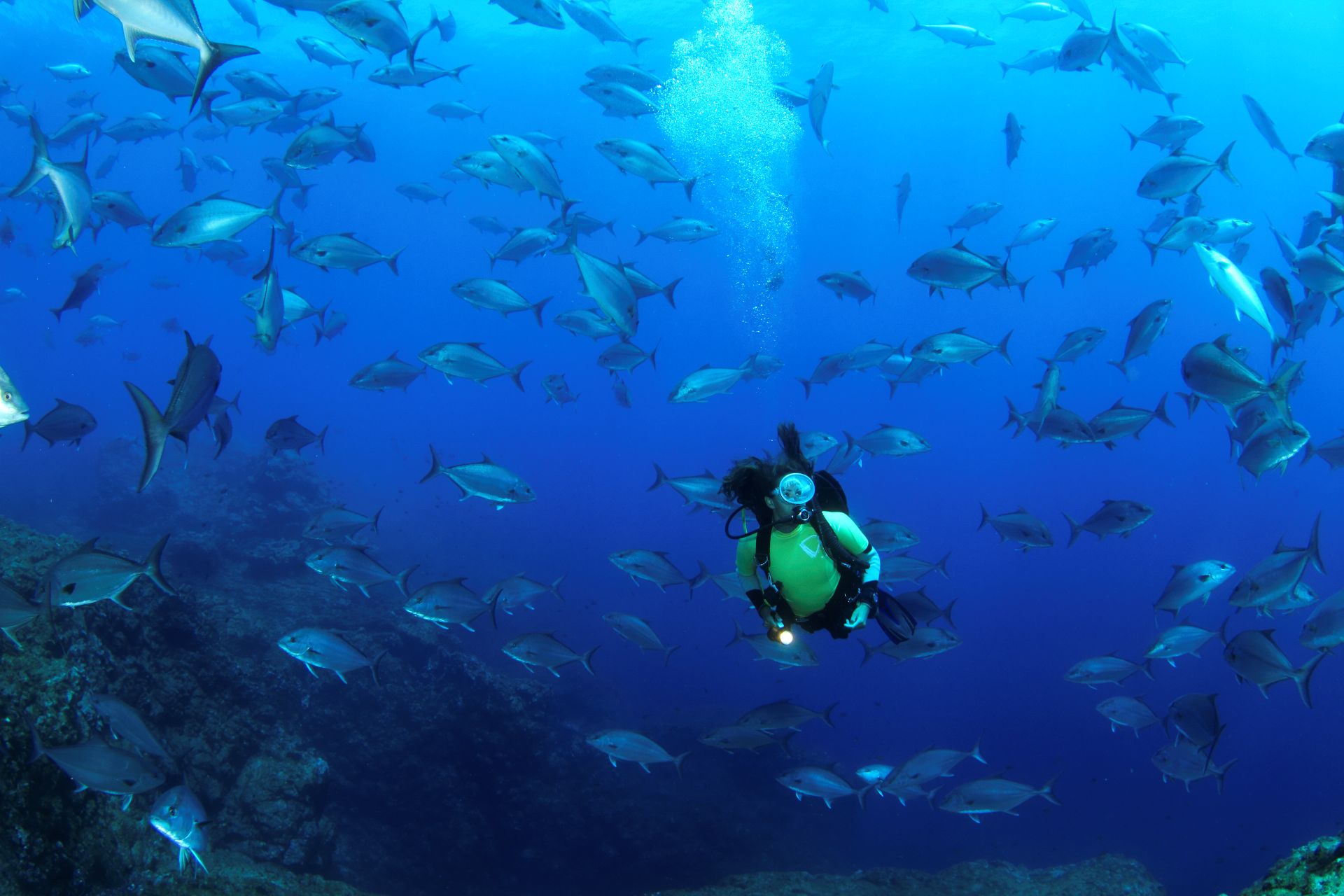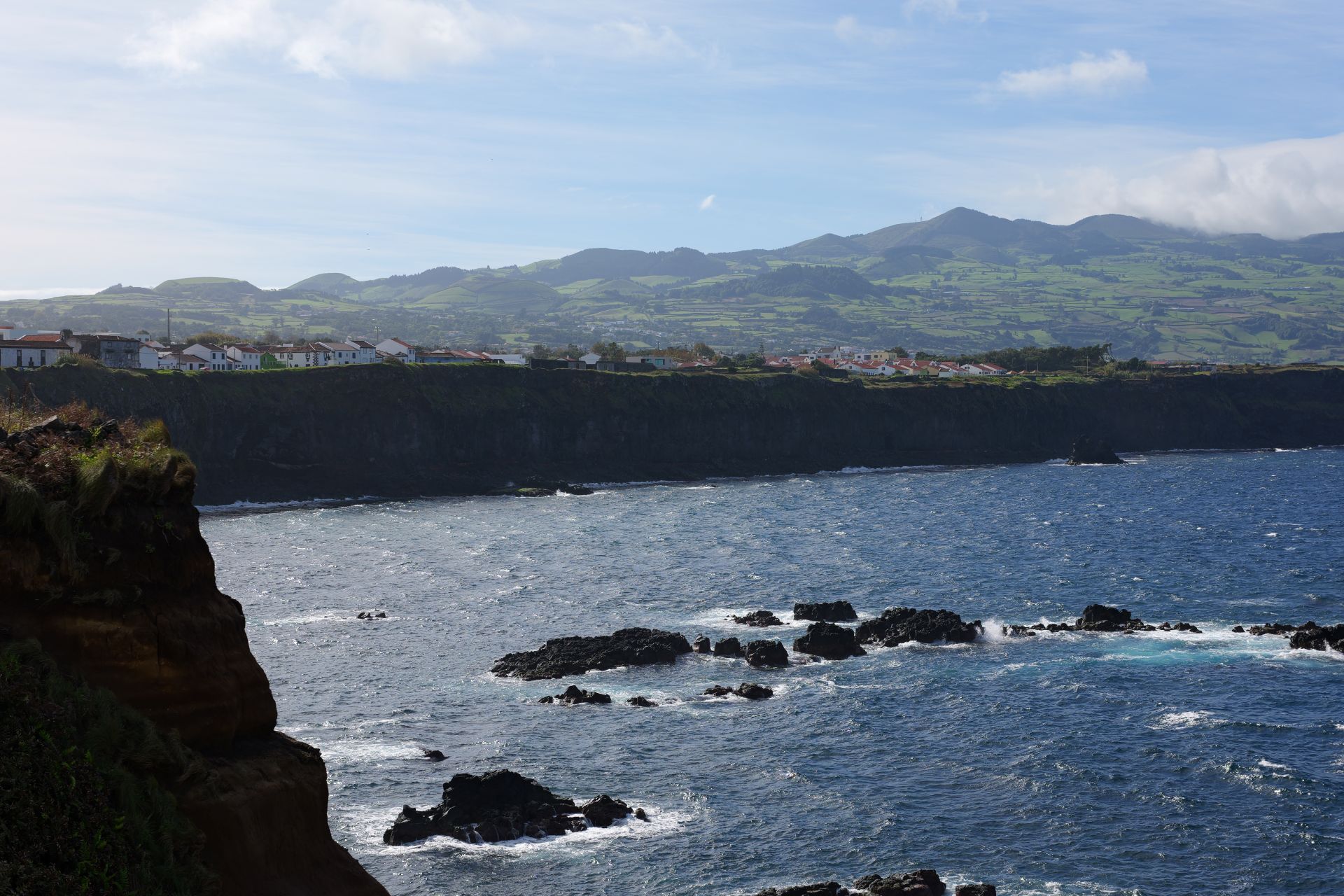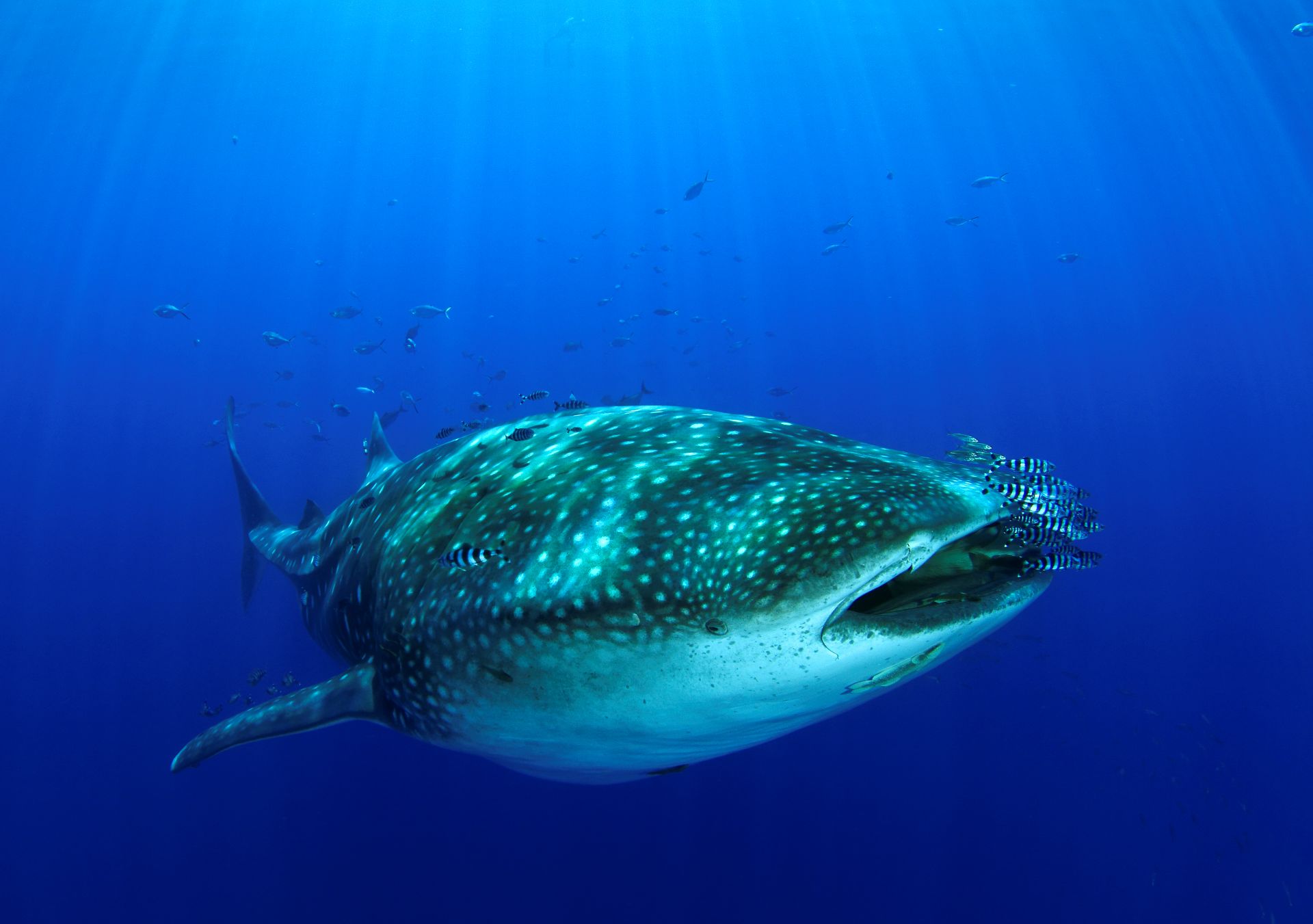A Model for Climate-Resilient Tourism
In the Atlantic Ocean, the Azores are pioneering a forward-thinking approach to resilience that could inspire coastal tourism globally.
Dubbed the “Hawaii of Europe,” the Azores are known for their dramatic landscapes, lush greenery and rugged coastlines. Millions of tourists visit this Portuguese archipelago each year, drawn by its unique beaches, whale watching, and traditional dishes like Cozido das Furnas – a stew cooked using geothermal heat. Visitors also come to hike volcanic craters and relax amid breathtaking scenery.
Tourism here is booming, outpacing national growth according to The Portugal News in July 2025. Yet behind the allure of Portugal’s “Green Jewel” lie the growing impacts of coastal erosion, a challenge that threatens both livelihoods and landscapes.
Without proactive climate adaptation and sustainable planning, the very environments that attract visitors could be lost. Planning for risk today is essential to safeguard the islands’ future – ensuring that tourism and nature can thrive together.
Everybody loves the seaside
When it comes to entering the sea, there are two kinds of people. The first approach the water with trepidation, dipping their toes to test the temperature, gradually venturing deeper until they feel ready to fully submerge. The second group runs headlong into the waves, embracing the surf with enthusiasm. From the sun-kissed beaches of the Mediterranean to the rugged Atlantic coastline, and the tropical Indian Ocean, this dance unfolds year-round as tourists flock to our preferred holiday destination: the coast. According to the Ocean Panel, at least 50% of global tourism is located in coastal regions.

The allure of the coast means that coastal destinations and beach resorts have become synonymous with socio-economic growth. Tourism creates jobs, generates revenue, opens new opportunities for businesses and is often the driving force behind infrastructure development. In Europe, the European Commission reports that in 2023 more than 40% of all tourism bed capacity was concentrated in coastal areas and tourism made up the largest share of workers (53.1%) for the EU Blue Economy, the continent’s ocean-based economy.
The paradox of a coastal paradise
Coastal regions may be the world’s favourite playgrounds, but they’re also on the front line of climate change. Their sandy beaches, breathtaking cliffs, and bustling resorts attract millions each year – yet the very features that make them so appealing are also what make them vulnerable to the impacts of climate change.
Among the most serious threats to coastal destinations is coastal erosion. As sea levels rise and storms grow stronger, beaches are quite literally disappearing. A European Commission study in 2020 warned that as much as half of the world’s beaches could vanish by the end of the century.

Erosion is nothing new. For millennia, waves, tides, and currents have sculpted coastlines. But now, the increasing ferocity of storms and the fact that people increasingly live by and visit coastlines is putting this natural phenomenon at an entirely different scale of risk, turning what was once a slow, geological process into an urgent crisis.
“If we go back 20 years, the coastline was completely different from what it is today,” explains Bruno Alexandre Aguiar Costa, President of the Parish Council of Fenais da Luz – a town on the northern coast of São Miguel, the largest island in the Azores, where 60% of the population lives within one kilometre of the sea. “It’s a long-standing problem that deeply worries people, especially those living close to the shore.”
According to research published by the European Conference on Soil Mechanics and Geotechnical Engineering in 2024, erosion rates in São Miguel are estimated at an average of 0.4 metres per year. Yet the authors explain the island’s geology plays a major role in shaping these events – some cliff materials erode far more quickly than others, leading to sudden collapses. In 2023, following a period of accumulated stress caused by geological fragility, wave and weather erosion, and human activity near the cliff edge, up to five metres of coastline were lost in some parts of Calhetas parish, São Miguel.
Entering the century of tourism
Home to around 246,000 people, the Azorean economy long depended on fishing and agriculture. During the 18th and 19th centuries, the islands exported millions of oranges and lemons a year to the United Kingdom; today, they are home to 30% of Portugal’s dairy cows.

In recent years, however, tourism has emerged as one of its fastest-growing industries. In 2023, hospitality revenues surpassed €187 million – a 46% increase compared to the previous year – while rural tourism brought in over €18 million, according to the Azorean government.
“As people say, we had the century of the orange, then the century of the cow, and now we are entering the century of tourism and services,” says Professor Piedade Lalanda, President of the Economic and Social Council of the Azores, a consultative body that unites government, employers, and civil society to advise on regional development and policy. “These three stages of our history are all rooted in nature – one way or another, nature has always been our foundation. If nature changes, the economic development of our islands is at risk.”
If nature changes, the economic development of our islands is at risk.
Professor Piedade Lalanda, President of the Economic and Social Council of the Azores
Yet, the same mid-Atlantic position that makes the Azores so attractive to visitors also leaves them exposed to the growing threats of storms and coastal erosion. Roads and other coastal infrastructure are increasingly at risk. On the island of Flores, Hurricane Lorenzo struck in 2019, damaging infrastructure and partially destroying the port – making it difficult to deliver supplies and affecting both residents and tourists.
Ironically, climate change could also make the Azores more appealing as a destination. As heatwaves make southern Europe less comfortable in summer, the islands’ mild, temperate climate could draw visitors seeking year-round escapes. A 2024 CaixaBank study found that exposure to extreme heatwaves makes tourists less likely to return to Spain.

The Azorean Government is responding with a strategy guided by the motto “Tourism all year round, on all islands.” The goal is to distribute visitors more evenly across the archipelago and throughout the year – supporting local livelihoods while reducing seasonal environmental pressure.
At the 2025 Better Tourism Lisboa (BTL) event, Regional President José Manuel Bolieiro highlighted this vision: “The Azores have huge potential to grow in terms of quantity, but we have seen consistent growth and, above all, qualitative growth.” The focus, he added, is on quality, excellence, and certification of tourism products and activities, ensuring greater value for local communities.
In 2024, the Azores became the first archipelago in the world to receive Gold Level “Sustainable Destination” certification from EarthCheck – recognition of its leadership in responsible tourism management.
Still, not everyone is convinced that growth alone guarantees sustainability. “Tourism is like two sides of a coin,” says Aguiar Costa. “On one hand, it supports local commerce and helps promote our landscape potential – like the beautiful viewpoint at Alto da Pedreira and the stunning northern coastline. But it also brings negative impacts, especially along heavily used hiking trails where the ecological footprint is clear.”
Tourism is like two sides of a coin – it supports local commerce but also brings negative impacts, especially along heavily used hiking trails.
Bruno Alexandre Aguiar Costa, President of the Parish Council of Fenais da Luz
To manage these pressures, vehicle access will be restricted on Rua de Baixo – a narrow road leading to a popular viewpoint – reserving it for residents only. “It’s a problematic area,” Aguiar Costa explains. “We want to reduce traffic and slow down erosion.”
Building barriers against the tide
Other physical measures include improving drainage systems to redirect water away from vulnerable zones. The construction of the Eco Via do Norte – a pedestrian and cycling path along the island’s northern coast – will allow tourists to explore the shoreline with minimal impact while reinforcing coastal defences. Traditional engineering solutions, such as rock armouring and seawalls, remain essential to absorb wave energy and prevent land loss.
Emerging approaches, however, are blending infrastructure with ecology. Multifunctional artificial reefs (MFARs) – underwater structures designed to dissipate wave energy while supporting marine life – are one example. These reefs can reduce erosion, enhance biodiversity, and even create new opportunities for diving tourism. Yet, nothing beats the protection provided by thriving natural ecosystems.

In 2024, the Azores made international headlines by creating Europe’s largest Marine Protected Area (MPA), spanning 287,000 square kilometres of the North Atlantic. With 30% of its waters now fully or highly protected, fishing and other extractive activities are strictly limited.
This not only safeguards marine biodiversity but also serves as a natural buffer that shields coastlines from wave and storm impacts. A 2020 UK government case study found that Marine Protected Areas are vital for coastal protection and climate resilience – including carbon sequestration. They also enhance ecotourism by attracting divers, researchers, and nature enthusiasts drawn to restored marine habitats.
The creation of the Azores MPA was the result of broad collaboration between government officials, scientists, industry representatives, and local citizens. Enric Sala, founder of National Geographic Pristine Seas, who took part in the scientific exploration of the area, told National Geographic: “What is so remarkable about the new protected area network is not only its massive size, but also the fact that so many local groups worked together to make it happen.”
Cooperation to mitigate coastal erosion
That same spirit of cooperation is now needed to tackle coastal erosion. “People raise concerns when they lose access to paths or places they’ve always used for leisure or fishing,” says Aguiar Costa. “Public engagement tends to be reactive – when something changes or disappears.” Instead, he advocates for a more proactive approach that offers a consistent strategy to mitigate coastal erosion.
Professor Piedade Lalanda adds that engaging people depends on involving communities from the start, ensuring that people are not just consulted but genuinely part of the decision-making process – and that needs awareness. “Populations must be heard,” Lalanda explains. “Measures that affect people’s daily lives, work, income, or homes cannot be imposed from the top down – they must be built from the bottom up.”

A project developed by the University of the Azores seeks to do exactly that. As part of Regions4Climate – a consortium of 46 partners working on 12 European regions – people are coming together to plan and implement real climate-resilient innovations created by and for people. “We want to make society more resilient to the impacts of climate change,” Laura Wendling, Regions4Climate coordinator, told REVOLVE. “This means we can better weather what happens in the future.”
One such innovation is a digital coastal vulnerability app being developed to support decision-making processes. The tool analyses the physical characteristics of Azorean coastlines – such as cliff types, beach composition, coastal defences, and exposure to storms or flooding – while also factoring in social and economic variables, including population and tourism density, infrastructure, heritage sites, and the ecological or cultural importance of coastal zones. The app can also be used to track whale populations which pass by the Azores, raising public awareness.
“The coastal vulnerability app allows us to involve the local stakeholders and local authorities in understanding the data that we’ve gathered about vulnerability,” explains Bruno Rosa, a researcher at the University of the Azores involved in the project. “In this way, we can engage communities with the problem and show local authorities where the most vulnerable places are, in a way that’s easy to understand.”
The coastal vulnerability app allows us to engage communities in a way that’s easy to understand.
Bruno Rosa, Researcher at the University of the Azores
Developing a tailor-made approach is crucial in the Azores, where each of the nine islands – with their distinct geographies, population patterns, and exposure to the sea – faces unique climate challenges. For instance, while north-facing shores are generally more exposed to wave energy, the most severe storms often strike from the southwest, creating complex vulnerability patterns across the archipelago. By modelling these variations, decision-makers can design more effective strategies for coastal protection, infrastructure planning, and tourism management.
“I hope we make people more aware of the challenges we face in the region,” adds Rosa, “and of the solutions that need to be applied.”
The future of coastal tourism depends on resilience
The impacts of climate change are becoming increasingly unpredictable – and for regions that depend on tourism, that uncertainty poses a profound challenge. The tourism industry is inherently volatile, shaped by shifting trends, economic cycles, and global events. When combined with the growing threat of rising seas, extreme weather, and coastal erosion, the stakes for coastal destinations become even higher.

The tension between tourism and climate change is not new, but it is becoming impossible to ignore. For an industry built on the promise of sun, sand, and sea, the effects of a changing climate are now outpacing the ability to respond. Beaches are shrinking, infrastructure is at risk, and the very landscapes that draw visitors are under pressure.
To secure their future, coastal regions must plan for resilience – not as an afterthought, but as a guiding principle. That means developing strategies that both manage climate risks and safeguard the natural and cultural assets on which tourism depends.
“We need to work with communities, help them understand the relevance of these measures so they become part of the solution, not victims of it,” says Lalanda. “But that dialogue depends on education and awareness – without those, participation simply won’t happen.”